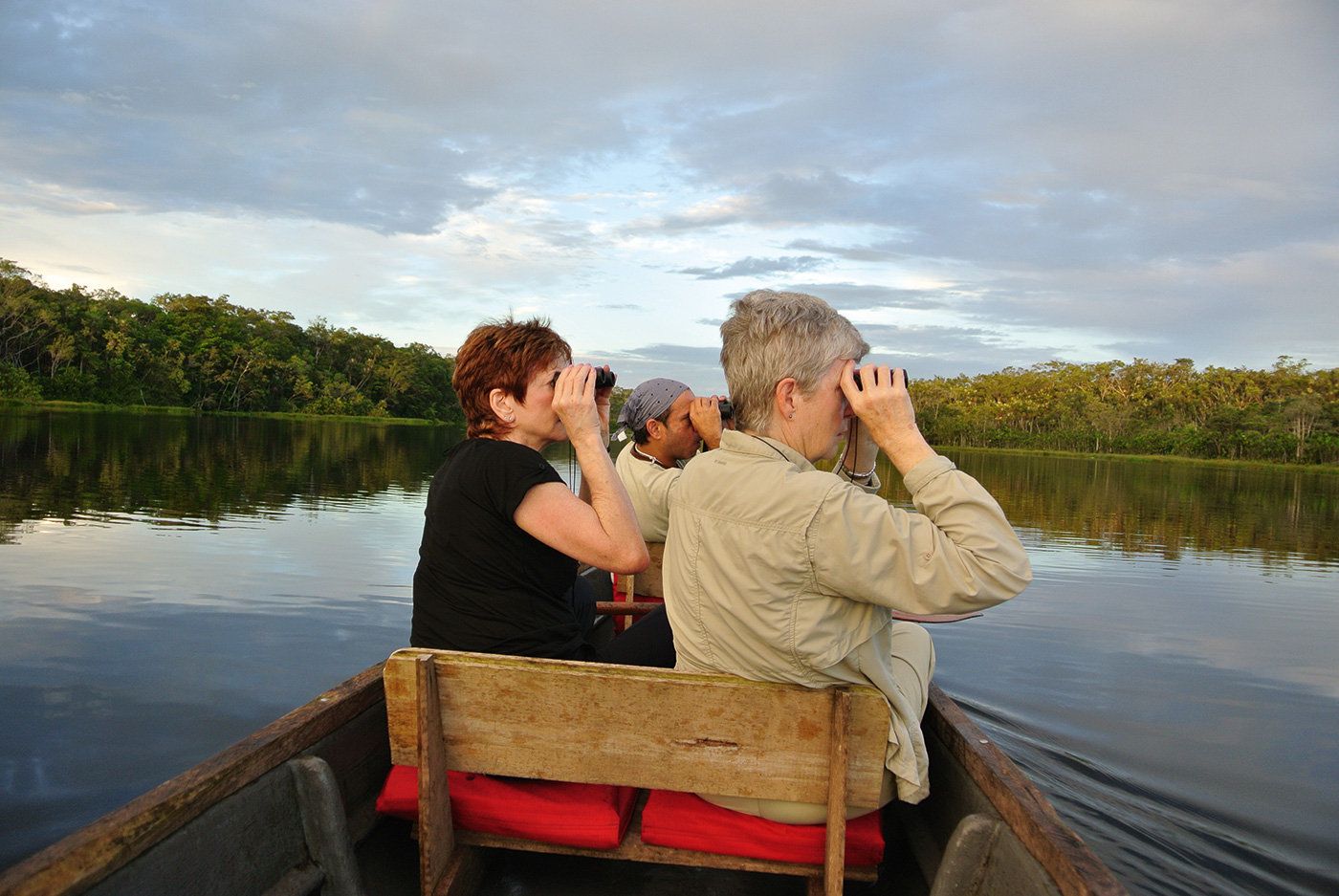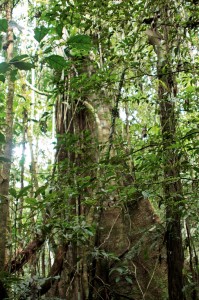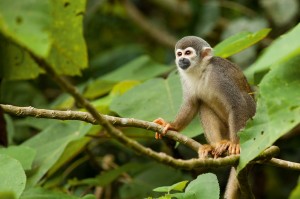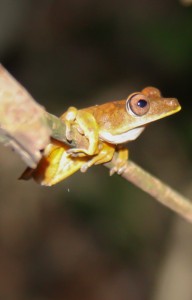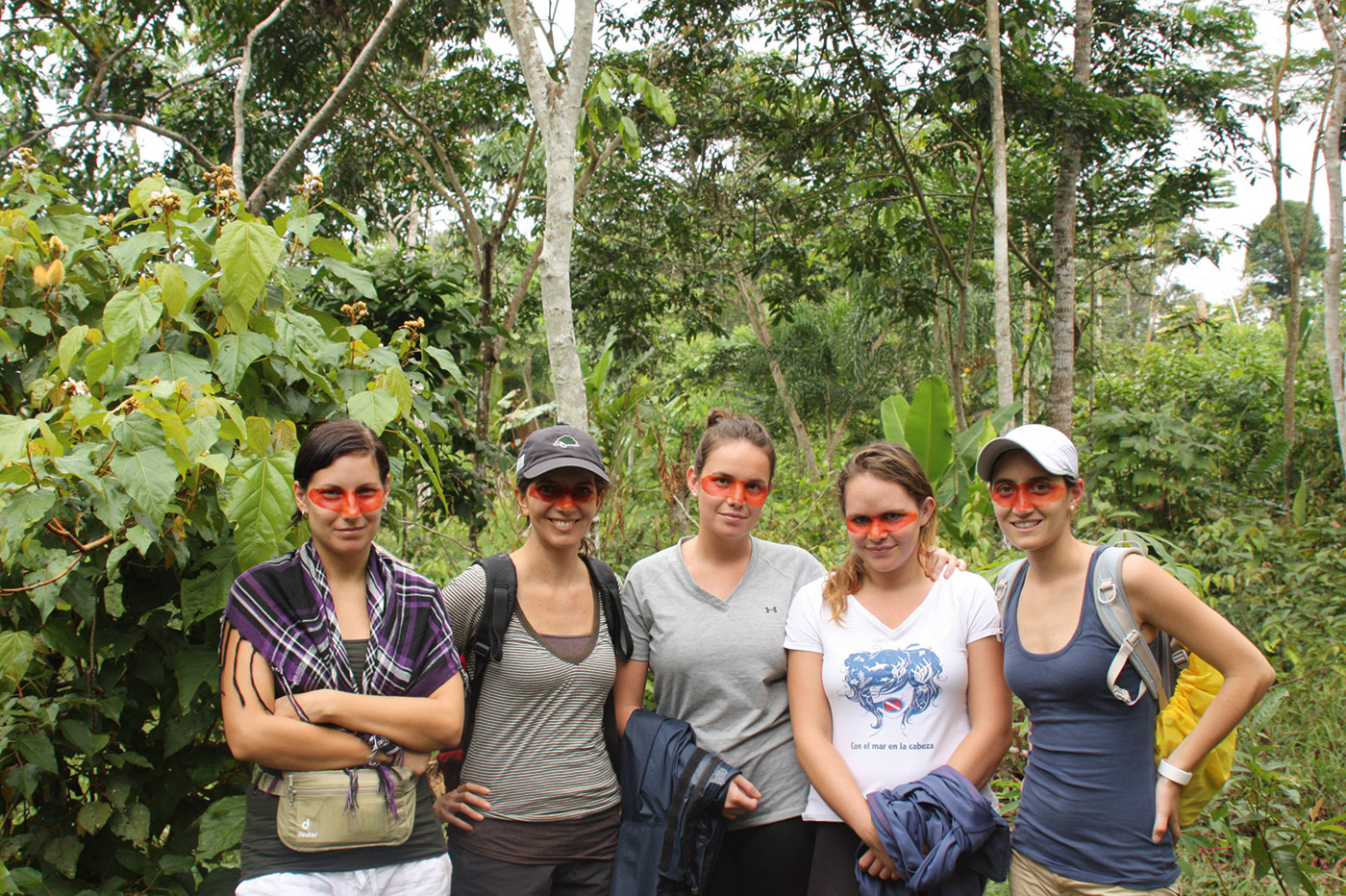AN OASIS OF WILDLIFE
Beyond mystery and myth, the Ecuadorian Amazon rainforest possesses one of the friendliest places which travelers wish to explore; it is a miracle of nature: the Yasuní National Park.
Located at the north-east of Ecuador, this protected reserve lies within a short flight (25 minutes) off the cosmopolitan capital city of Quito; or else, a four and a half hour trip by land. Its vast area occupies 9,820km2 of lush tropical rainforest. This park is delimited by two majestic rivers nourishing the legendary Amazon River; they resemble a caiman head with huge, wide open maws.
The Yasuní National Park is most certainly one of the premier bio-diverse sites on
earth. Here, adventuresome travelers will be awaken just before dawn by a chorus of birds, guttural calls of howling monkeys and the amazing sound of squirrel monkeys leaping from branch to branch.
At the time of exploring the tropical jungle, or appreciating the forests from the sight-seeing high platforms built at lodges, the abstract statistics on “mega-biodiversity” found at Yasuní will come to life right before the tourists’ eyes. After that, explorer visitors will be able to discover on their own what the primary forest canopy is all about, along with the nearly 600 bird species inhabiting the reserve – one third of all birdlife found within the Amazon Basin.
Likewise, and while rowing your canoe on black-water brooks and lagoons/lakes, you will realize that the Yasuní National Park is home to approximately one third of Amazon amphibians and reptiles. On top of this, a famous mammal lives in this area: the pink dolphin – a friendly and smart animal that will captivate you at first sight.
WILDLIFE
The rivers, lakes, brooks and swamps of the Yasuní Park are home to 250 species of amphibians and reptiles, and to 382 known species of fish.
Rivers, lakes, brooks and swamps at the Yasuní Park are home to 250 kinds of amphibians and reptiles, and to 382 known species of fish. Warm-blooded water friends live here: giant otters or nutrias. Unbelievable sites at this natural garden, the wealth of which lies with the co-existence of different ecological systems, each with its own characteristic flora and fauna.
The abundance of the Yasuní Park rainforest is not only expressed in terms of habitats and inhabitants; it is full of an amazing variety of indigenous cultures, each speaking its own language, having its own history and interpretation of the cosmos.
Counted in a few thousands, the Huaorani, known as the WAO, -whose name means “human being”- are the masters of this jungle universe. While many of them remain isolated from civilization, many have indeed been in contact with the western world during decades, and have become perfectly integrated to our ways. A trip to the Yasuní Park offers the opportunity to get to know them, and interact with them, in order to learn from their culture and their ways of life amidst this Amazon rainforest.
The Trip
To gain access to the Yasuní National Park, you must inevitably engage the services of specialized tourist operators who will assist you in arranging flights from Quito to Francisco de Orellana (locally known as “Coca”), located along the riverbanks of the Napo River. If you have made arrangements for hotel or lodge accommodations, you will need to ride a large roofed canoe with overboard motor, and travel on the river.
Afterwards, guests can switch to smaller canoes in order to row on the black-water lakes, or else trek toward their lodge, as motorized transportation is banned on these lakes in order to not disturb the wildlife. The trip is a perfect occasion to watch species such as river nutrias, owls, halcyons and kingfishers, hoatzins, jacamars, hawks and monkeys.
Visitors can experience a fragment of the unbelievable and amazing bio-diversity of this region either by staying at one of the jungle lodges along the riverbanks of the Napo River, or else travel onboard one of the luxury boats navigating on the tributaries of the Amazon River.
Activities
Activities and options are ongoing at the Yasuní National Park, attending to the interests and physical abilities of all sorts of travelers. These include jungle trekking, bird-watching, piranha fishing, photography safaris, cultural visits to indigenous communities, navigation on the bountiful rivers either on board a canoe, raft, kayak and even tubing.
Is traveling around the Amazon Rainforest with comfort and safety a real possibility? We can assure you it is. If you choose to do it, you will be witness to the fact that traveling within the Ecuadorian Amazon Region is not only feasible as a safe and accessible option, but also one of the most fascinating and rewarding experiences in a lifetime.
Night-time activities
Safari travelers depart with lanterns looking for the shyer nocturnal creatures of the rainforest: caimans, spiders, serpents and frogs. Star-gazing is yet another possibility.


